Radiation is used in every examination in the radiology department, as we know that radiation has many risk factors, which will lead to normal itching and cancers to a higher extent. So, to prevent patients from this radiation, dose optimization is necessary. A small amount of radiation can damage the DNA easily or may impact the individual’s health negatively.
To take care of radiation, a principle called the “ALARA Principle” was introduced and followed by every radiographic professional to protect them and their patient from unwanted exposure.
What is ALARA Principle in Radiology?
ALARA is a basic principles of radiation protection that expands as“As Low As Reasonably Achievable”.
This simply refers to optimizing the radiation exposure for every examination and using as much as possible with proper distance between x ray image receptors to source distance.
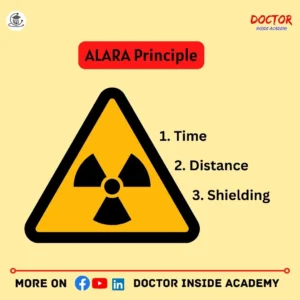
The ALARA principle is a fundamental concept because it prevents two things – unwanted exposure and overexposure to radiation. As radiation is not safe for children and pregnant women, also impacts the elderly one’s.
It is also known as the universal safety principle.
ALARA Concept by ICRP
ALARA stands for “As Low As Reasonably Achievable”, and is basic principles of radiation protection.
ALARA is undertaken by ICRP’s, 3 tiered system of radiological protection, where ICRP means the International Commission of Radiological Protection.
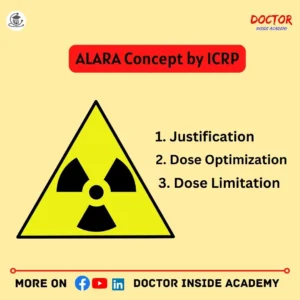
Most radiation safety programs follow ALARA.
Justification
While exposed to radiation; the risk vs. benefits factor is addressed and concluded as benefits over these effects on biological tissues.
Dose Optimization
The dose is optimized properly and must kept according to ALARA principles, including economic and societal factors.
Dose Limitation
The final radiation dose must be at optimum radiation dose limits.
ALARA principle is followed, whether smaller exposure is taken, and is categorized into three principles. These are as follows.
3 Cardinal Principles of ALARA
The 3 Cardinal principles of ALARA are entitled to minimize and prevent radiation risks near radiation zones for their workers and patients.
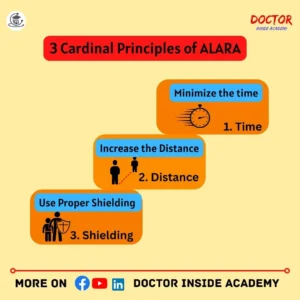
These 3 cardinal principles are divided into these three principles as follows:
Time
Minimize the time as much as possible and the keep dose optimized to get the final best output.
So, exposure timing reduces radiation dose.
Distance
Maximize the distance between the radiation source and the radiographers know that, if the distance increases, the radiation dose will be inversely proportional to distance, so radiation exposure is also decreased for the source.
Hence, doubling the distance between you and a source of radiation reduces the exposure strength decreased by 4th factor.
Shielding
Proper shielding is considered while exposed to radiation in any diagnostic room.
X rays shielding are lead apron, a concrete wall near a radiation exposure panel, gonadal or thyroid shielding, etc.
Use this shielding, whenever possible, in portable exposure or x ray room studies.
These are 3 cardinal principles of ALARA are very important in radiation safety and minimizing radiation dose.
Key Components of ALARA Principle
ALARA principle is very useful in radiology and entitled when radiation safety follows or measures.
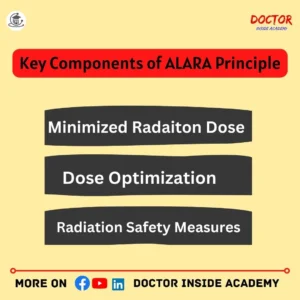
Here are a few key components of the ALARA principle:
Minimized Radaiton Dose
The main goal of the ALARA principle is to minimize the radiation and take the exposure at a very minimum required dose to get better diagnostic x ray images.
It always assures the potential risk of radiation by balancing the final medical imaging outputs.
Personalized Approach
Every patient is unique and has different factors like age, sex, prior history of illness or disease, or clinical history.
These are all taken into account when the ALARA principle is applied, it takes care of every patient with personalized exposure factors.
Dose Optimization
Every exposure takes different exposure values to take the proper image. With the implementation of the ALARA principle, minimum exposure time with proper selection of tube current, or based on their clinical references.
Radiation Safety Measures
The third LARA principle is about proper shielding to prevent direct radiation exposure.
This prevention includes lead shielding like lead aprons, thyroid shielding, gonads shields, etc; collimation.
These devices or materials keep the radiation focused and reduce unwanted radiation exposure to the surrounding tissues.
Regular Maintenance
Proper review and improvement must be applied with the ALARA principle to best results in radiology.
These improvements include regular monitoring, quality assurance, and taking care of advancements in technology to take care of dose reduction and dose optimization.
ALARA principle also includes keeping records of radiation doses.
These are the few key components of the ALARA principle and is very important to execute the ALARA principle properly in radiology.
Benefits of ALARA
ALARA prucple is applied in every exposure taken in radiology. This principle has its benefits are followings:
Patient Safety
The main benefit for the patient is to don’t have exposure more than needed, as the ALARA principle suggests using minimum radiation exposure dose, which decreases the risk level, i.e. – carcinoma, etc.
Dose Optimization
The radiation dose is optimized, as the minimum amount of radiation with proper shielding and distance is maintained.

Reduces Long-Term Risks
The ALARA principle takes care of how much radiation is going to hit the human tissues. This is in the desired quantity only this decreases health-related risks.
Prevention from Overexposure
ALARA principle takes care of how much radiation is produced, the radiation used here is only the amount, that is needed to get proper output.
This principle is very important, as it takes care of the reputation of the same study again and again, which will further affect to patient radiation dose.
This ensures patient safety and justifies radiation also.
Quality Assurance
Regular maintenance and implementation of radiation practices must be ensured. Quality assurance with the ALARA principle keeps a high standard of medical imaging quality and regular enhancement.
These are the few benefits of ALARA.
Risks for ALARA
Every coin has two faces, likewise, the ALARA principle has few risks involved with benefits the following:
Proper Balancing
It’s very important to keep a balance between minimizing radiation exposure with proper image quality assurance.
Sometimes, improper selection of radiation factors leads to inadequate x ray image output.
Financial Efforts
Implementing advanced strategies and upgrading equipment for dose reduction leads to financial expenses for that hospital or center.

Education
Lack of training and education leads to improper usage of ALARA to reduce radiation exposure with safety measures.
Proper training and workshops are very important to understand ALARA principles properly.
X ray Image Noise
Reduction of radiation while adjusting lower exposure factors sometimes leads to an increment in x ray image noise.
This further leads to improper diagnoses of x ray images.
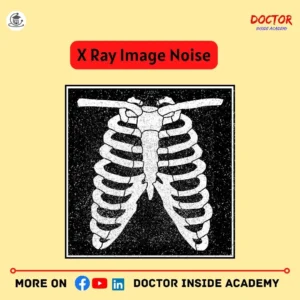
These are a few risks of the ALARA principle with the benefits above.
Why is it Important to follow the ALARA Principle?
ALARA principle is used to minimize the radiation exposure of radiographers, and patients to the public.
This ALARA principle applies to all levels, from a hospital, clinics, and nuclear medicines to the industry level.

The main aim of the ALARA principle is to check the overexposure of radiation and keep it within legal limits or at standard doses at regular levels.
To reduce radiation exposure, ALARA principles must be followed, these are time, distance, and shielding.
How to Apply the ALARA Principle
ALARA principle is followed by its 3 cardinal principles of ALARA, where these 3 are introduced in detail.
Time
- If you work near radioactive sources, here, you must try to minimize your time spent near those sources,
- Perform your task as soon as possible, to avoid longer exposure time,
- Try to avoid surroundings like contaminated zones or airborne radioactive areas.
Time simply states that leave the radiation area as soon as possible with completing the final exposure.
Distance
- The amount of radiation exposure is inversely proportional to the square of the distance between the radiographer and the source.
- Here, if you double the distance, the radiation value decreases by one-fourth.
Shielding
- Radiation protection of radiographers is very important,
- It depends on which type of shielding is used during the exposure, like a lead apron, gonads shielding, thyroid shielding, wooden lead wall near the exposure unit, concentrate walls, lead gloves, etc.
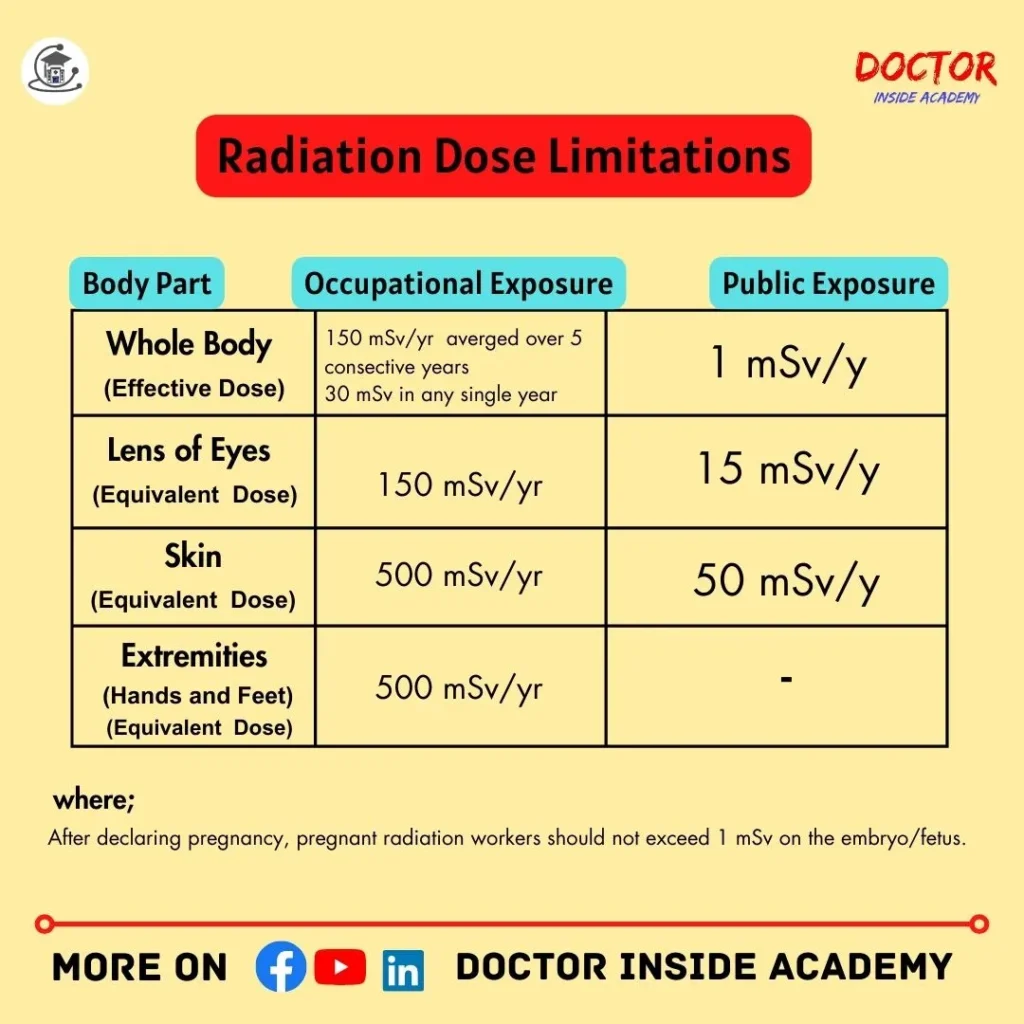
These are 3 cardinal principles of ALARA, which are time, distance, and shielding, which must be entertained properly in the radiology department to get the best output and take care of the risk vs benefits factor.
How to Protect Yourself from Radiation?
As we know, the ALARA principle is used to control radiation exposure but it does assure that any amount of radiation is not harmful to biological tissues.
If you are a radiographer, radiologist, trainee, hospital staff, etc, you must be aware of radiation risks.
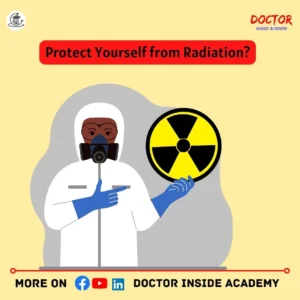
Here are the few radiation safety measures, you must follow:
Radiation Safety Measures
- Try to reduce the radiation production or usage,
- According to the ALARA principle, use less as possible,
- Try to isolate yourself from direct radiation exposures,
- Choose the best exposure factors; to lower the radiation risks,
Proper Hygiene
- Avoid ingestion of radioactive materials intentionally or accidentally,
- Try not to eat anything in the radioactive area, like food or drinks,
- Washing hands and avoiding hand-to-mouth habits; if you have, this limits the risk level of radiation exposure.

Control of Contamination
- Proper disposable of radioactive substances,
- Label radioactive substances and zones properly,
- Proper rules and regulations must be applied in radioactive areas.
- Avoid inhalation of radioactive substances by the respiratory medium.

Use of PPE
- PPE stands for Personal Protective Equipment
- It includes an apron, eyewear, and protective gloves, and helps to reduce ingestion or cut off direct contact with the radioactive substances.
If these must be followed, then radiation protection is assured, because medical staff protection is very important, when working around radiation. as ALARA also takes care with time, distance, and shielding.
Application of ALARA in General Radiography
ALARA principle is very useful in radiation safety and this is very helpful for patients and the public.
Here are a few applications of the ALARA principle in general radiology:
Radiation Exposure Optimization
Many exposures like mAs(milliampere-seconds), and KvP(kilovoltage peak), to get the best x ray image with proper exposure optimization with the ALARA principle.
Automatic Exposure Control devices are embedded in radiography systems to enhance the radiation exposure to get better diagnostic x ray images.
Justification of Diagnosis
Radiographers and medical professionals collaborate on the risk vs benefits factors of radiation, like exposure the radiation to biological tissues.

Proper Collimation
Collimation is a concept of optimizing x ray beam towards the target source.
It helps avoid unwanted radiation exposure to adjacent tissues and reduces scattering of radiation.
These help in better diagnostic images with minimum radiation to the patients.
Lead Shielding
Lead shielding used in radiology includes lead aprons, thyroid shielding, and gonadal shielding.
These are used in protecting sensitive organs, from unwanted radiation exposure during medical imaging exams.
Along with these devices, always take care of patient radiation dose, this will lead to the reduction of the radiation dose for them.
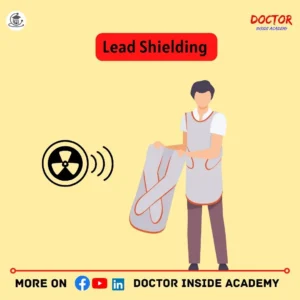
Patient Positioning
Patient position is very important to get better diagnostic results, as positioning ensures the right body part is going to be exposed.
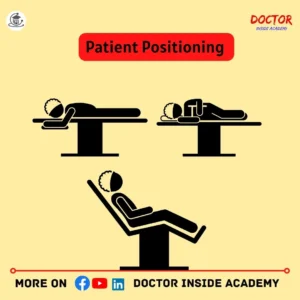
Many immobilization devices are also used to stabilize the body part and these reduce movement to zero, which helps to obtain the best still x ray images.
Avoid Repetition
Proper patient positioning, use of immobilization devices, and use of the ALARA principle effectively, reduce the reparation of every exposure.
As these give final diagnostic images at once, this saves the patient from additional radiation doses and also saves cost, resources, and time for health care.
Implement in Fluoroscopy
Fluoroscopy uses higher radiation than usual diagnostic exams.
Here, the ALARA principle must be accounted for to minimize the continuous radiation exposure to the patients.
These are the few applications considered while using the ALARA principle in radiography as it helps radiographers obtain the best diagnostic x ray images and take care of unwanted radiation exposure.
Last Words
ALARA principle plays a very critical role in radiation safety and minimum radiation exposure for the patient and the public.
In this chapter, we studied the ALARA principle in depth, with its 3 cardinal principles, benefits, risks, and applications along with how anyone can protect them from radiation effectively.
I hope you learned something new today. Stay connected to learn more daily.
Disclaimer
This article is written based on the author’s learning, experience, and expertise in the radiology field, as he or she is a paramedical student.
Any third-party websites are referred to in the article; take care, we are not responsible for any changes in them.
If you are going to use this article in your content, then proper attribution and credit are must; otherwise, remove it as soon as possible.



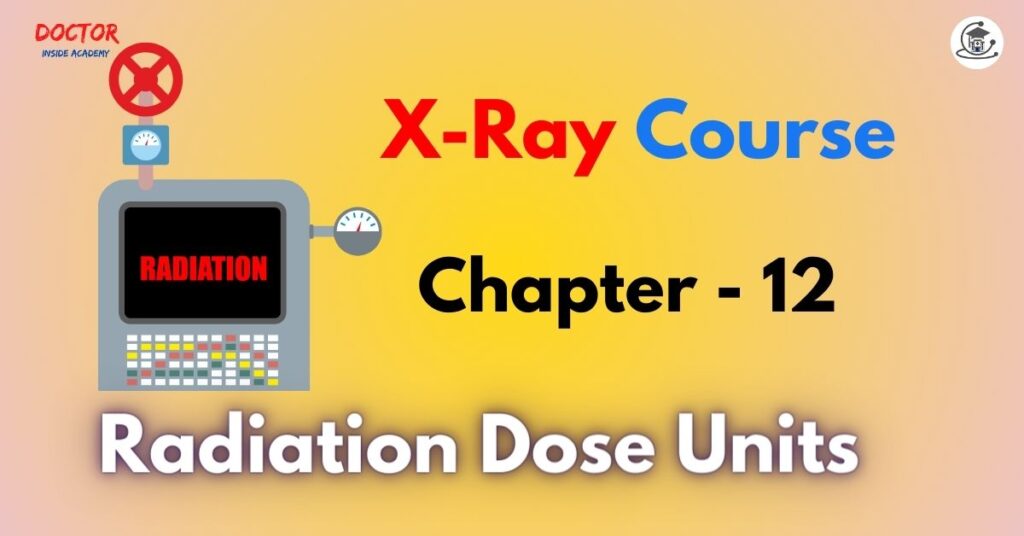


Pingback: Radiation Protection - Doctor Inside Academy
Pingback: Understanding Radiographic Exposure Factors - Doctor Inside Academy